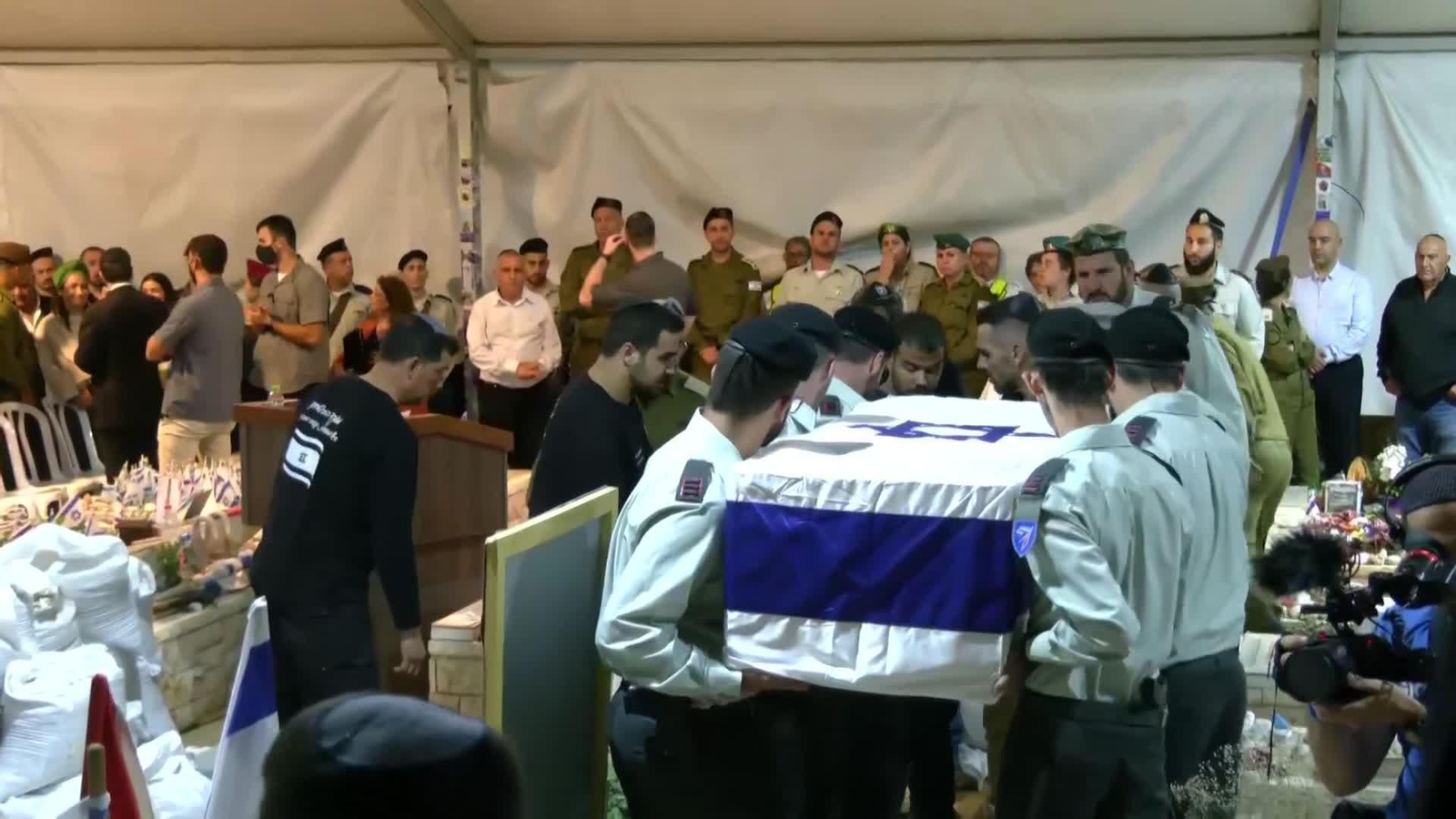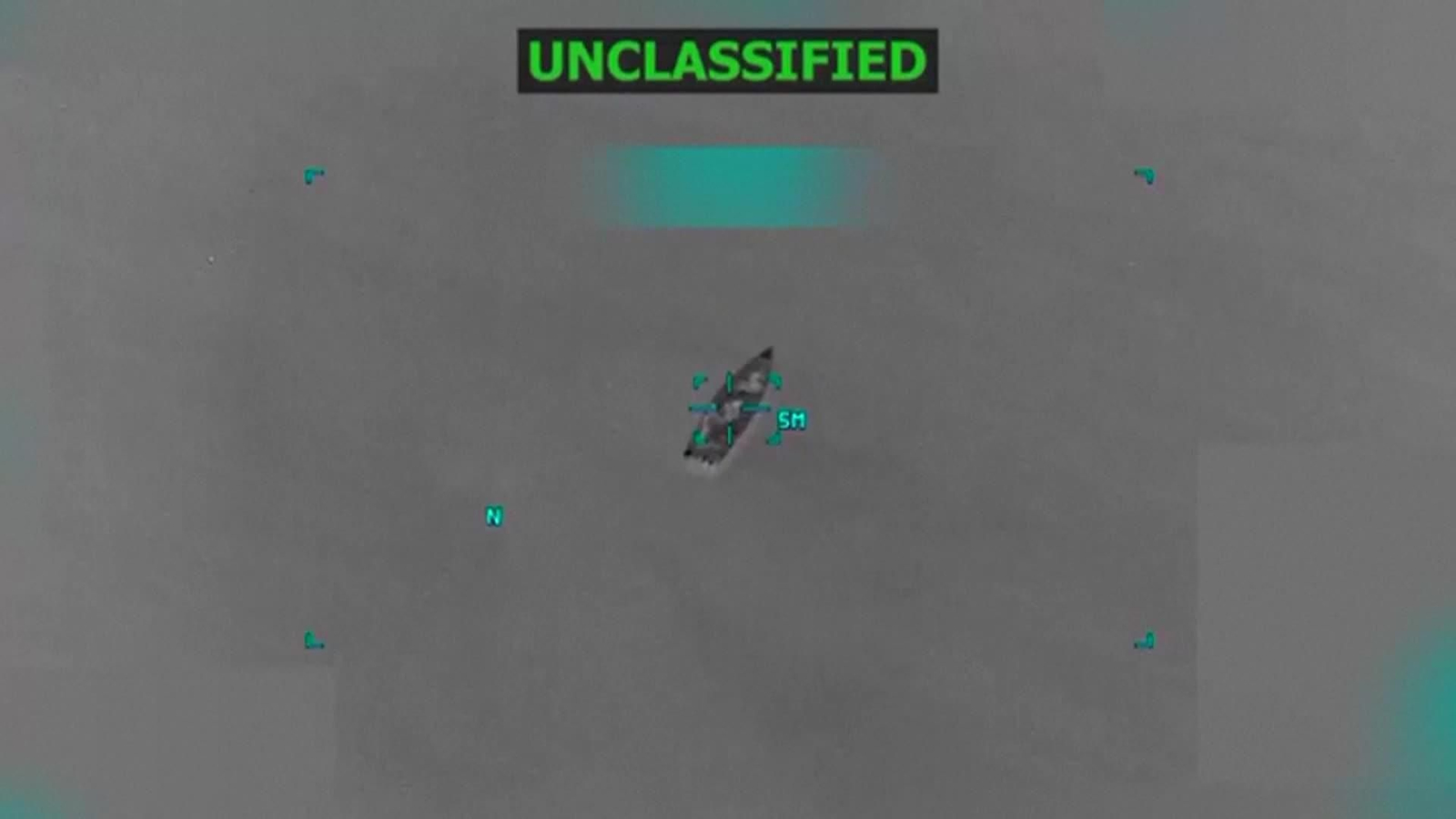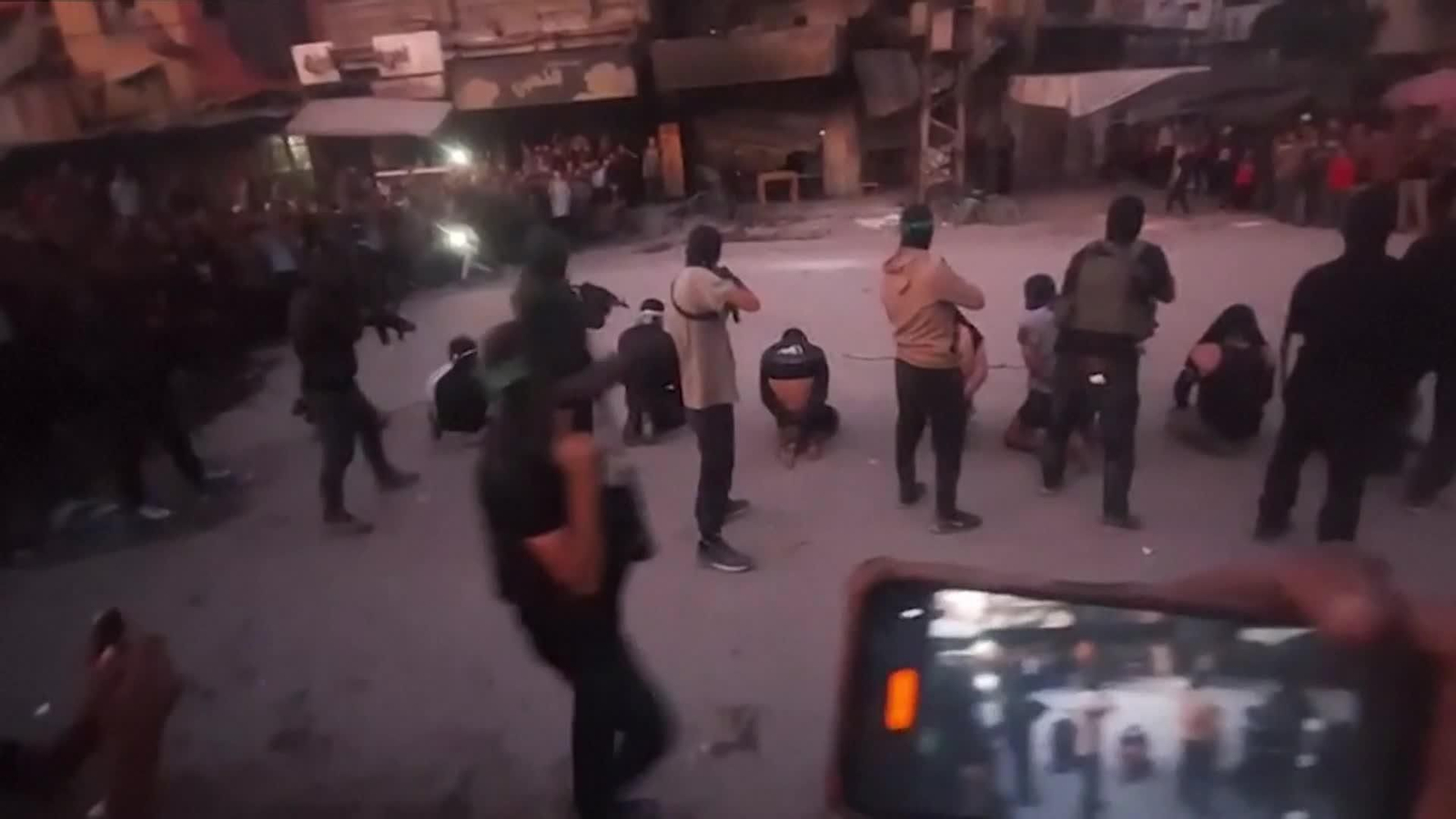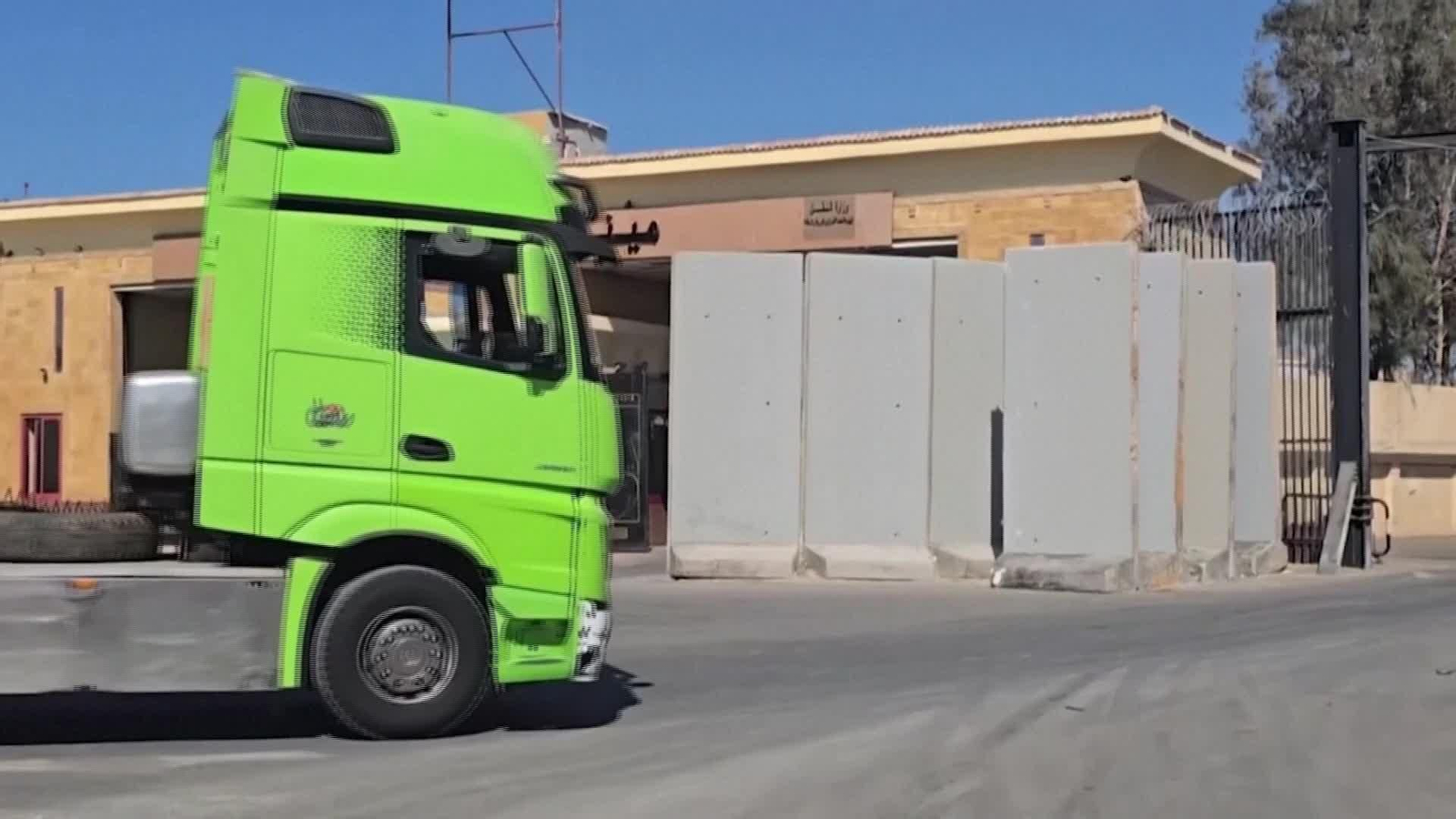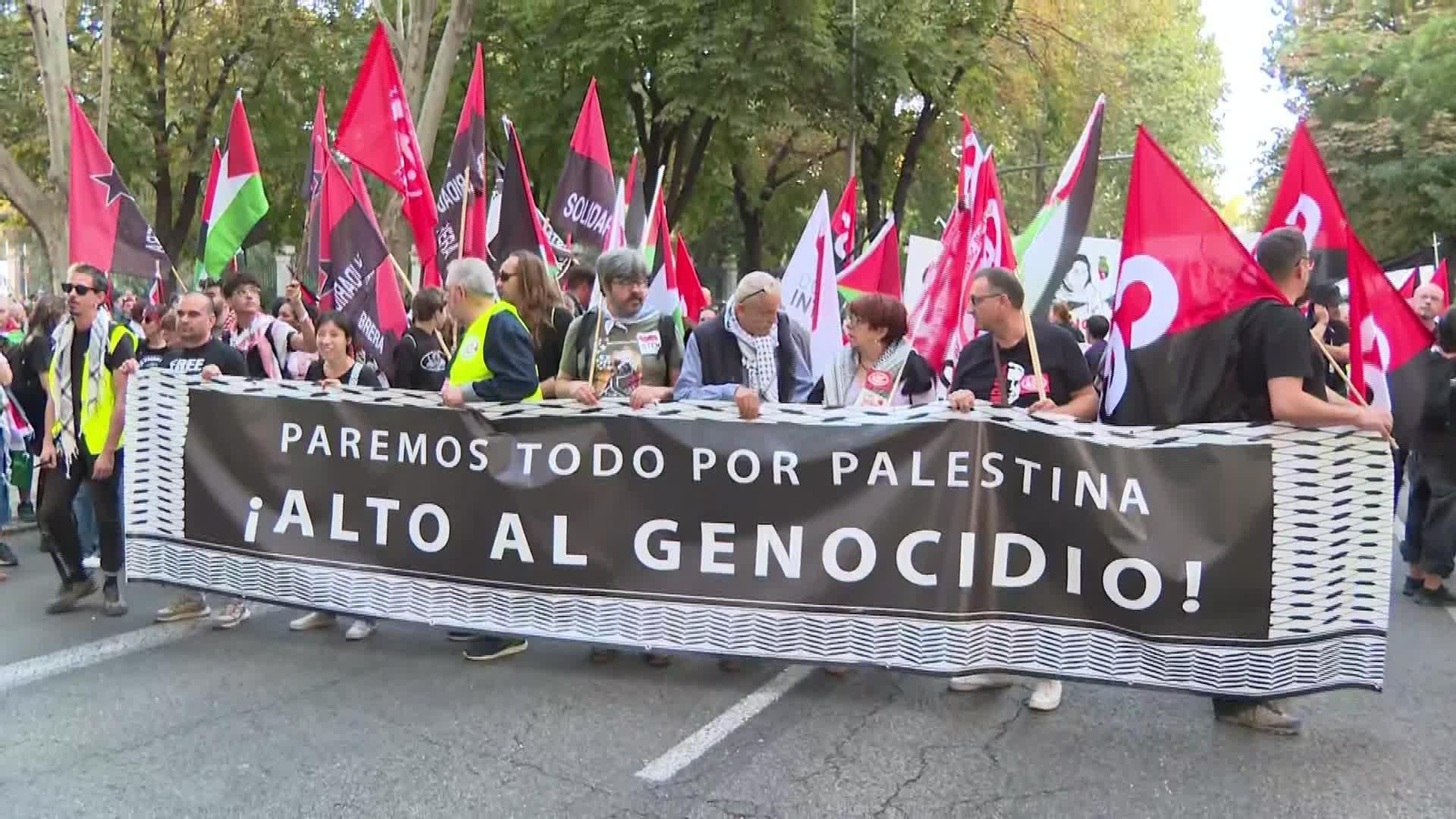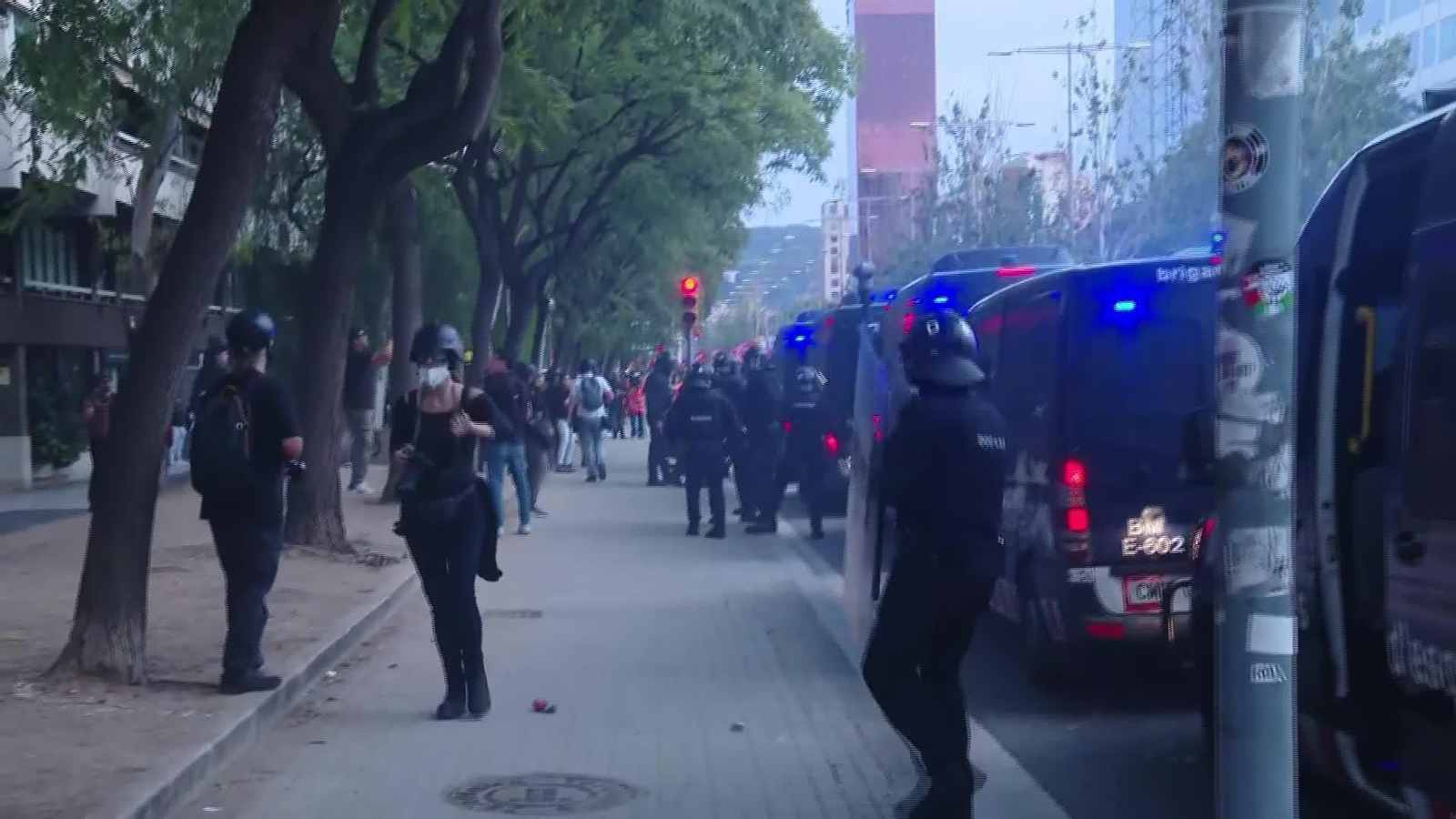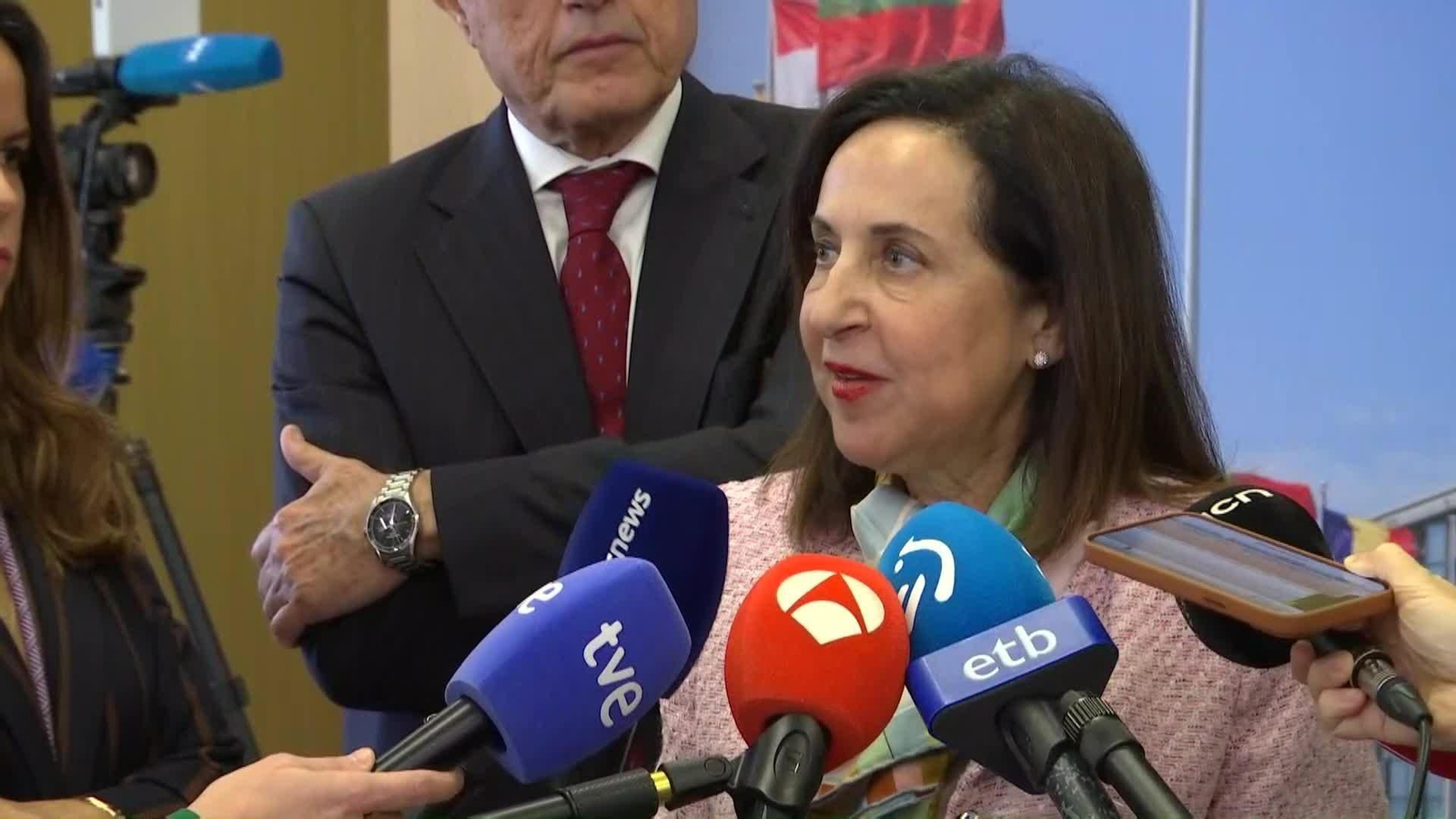V058-GAZA NIÑOS MALNUTRIDOS
At Nasser hospital in Gaza's Khan Younis, medical staff at the paediatrics department attend to malnourished children.
Three-year-old Abdul Rahman is among the patients receiving care. His physical condition shows signs of weight loss and severe malnutrition, according to doctor Ahmad al-Farra, the director of paediatrics department in the hospital.
"Abdul Rahman was, God bless, not in need of anything, he was doing well, in perfect health," his aunt Itimad Kilab said. "(With) the lack of milk, protein and food, his health began to deteriorate gradually until he reached this state."
Famine has struck an area of Gaza and will likely spread over the next month, a global hunger monitor determined on Friday (August 22), an assessment that will escalate pressure on Israel to allow more humanitarian aid into the war-torn Palestinian enclave.
The Integrated Food Security Phase Classification system said 514,000 people - nearly a quarter of Palestinians in Gaza - are experiencing famine and that was due to rise to 641,000 by the end of September.
Some 280,000 of those people are in a northern region covering Gaza City - known as Gaza governorate - which the IPC said was in famine, its first such determination in the enclave. The rest are in Deir al-Balah and Khan Younis - central and southern areas that the IPC projected would be in famine by the end of next month.
Israel dismissed the report as "false and biased," with the military body that coordinates aid deliveries into Gaza saying the IPC had based its survey on "partial data originating from the Hamas Terrorist Organisation."
For a region to be classified as in famine at least 20% of people must be suffering extreme food shortages, with one in three children acutely malnourished and two people out of every 10,000 dying daily from starvation or malnutrition and disease.
Even if a region has not yet been classified as in famine because those thresholds have not been met, the IPC can determine that households there are suffering famine conditions, which it describes as starvation, destitution and death.
U.N. human rights chief Volker Türk said on Friday that famine in Gaza was the direct result of Israeli government actions, and warned that deaths from starvation could amount to a war crime.
The IPC analysis comes after Britain, Canada, Australia and many European states said the humanitarian crisis had reached "unimaginable levels" after nearly two years of war between Israel and Palestinian militants Hamas.
U.N. Secretary-General Antonio Guterres has long warned of an "epic humanitarian catastrophe" in the enclave of more than 2 million people.
U.S. President Donald Trump last month said many people there were starving, putting him at odds with Israeli Prime Minister Benjamin Netanyahu, who has repeatedly said there was no starvation.
Israel controls all access to Gaza. COGAT, the arm of the Israeli military that oversees aid flows, said on Friday the IPC report ignored Israeli data on aid deliveries and overlooked a recent increase in food supplies taken into the territory.
"COGAT firmly rejects the claim of famine in the Gaza Strip, and particularly in Gaza City," the agency said, denouncing the report as "unprofessional."
The U.N. has long complained of obstacles to getting aid into Gaza and distributing it throughout the war zone, blaming impediments on Israel and lawlessness. Israel has been critical of the U.N.-led operation and accuses Hamas of stealing aid, which the militants deny.
The IPC said the analysis released on Friday only covered people living in Gaza, Deir al-Balah and Khan Younis governorates. It was unable to classify North Gaza governorate due to access restrictions and a lack of data and it excluded any remaining population in the southern Rafah region as it is largely uninhabited.
It is the fifth time in the past 14 years that a famine has been determined by the IPC - an initiative involving 21 aid groups, United Nations agencies and regional organizations that is funded by the European Union, Germany, Britain and Canada.
The war in Gaza was triggered on October 7, 2023, when Hamas killed 1,200 people in southern Israel and took some 250 hostages, according to Israeli tallies. Since then, Israel's military campaign has killed more than 62,000 Palestinians, according to Gaza health authorities.
The United States, Qatar and Egypt have been trying to broker an end to the conflict.
DESCRIPCIÓN DE IMÁGENES
ARIOUS OF CHILDREN INSIDE NASSER HOSPITAL / INTERVIEW WITH AUNT OF A CHILD SUFFERING FROM MALNUTRITION / INTERVIEW WITH A DOCTOR AT NASSER HOSPITAL / VARIOUS OF PEOPLE AT SOUP KITCHEN / VARIOUS SHOTS OF A PALESTINIAN WOMAN INSIDE HER TENT
SHOWS: KHAN YOUNIS, GAZA (AUGUST 20, 2025) (REUTERS - Access all)
1. PEOPLE AT THE NASSER HOSPITAL
2. A SIGN THAT READS "PAEDIATRICS DEPARTMENT B"
3. VARIOUS OF A MALNOURISHED CHILD ON A HOSPITAL BED
4. (SOUNDBITE) (Arabic) PALESTINIAN WOMAN AND AUNT OF A MALNOURISHED CHILD, ITIMAD KILAB, 30, SAYING:
"Abdul Rahman was, God bless, not in need of anything, he was doing well, in perfect health. He weighed about 12 kilos and had beautiful hair. His hair started to fall out and he developed swelling in his legs. Before the famine, he hadn't suffered from anything."
5. VARIOUS OF KILAB AND HER MALNOURISHED NEPHEW, ABDUL RAHMAN
6. (SOUNDBITE) (Arabic) PALESTINIAN WOMAN AND AUNT OF A MALNOURISHED CHILD, ITIMAD KILAB, 30, SAYING:
"(With) the lack of milk, protein and food, his health began to deteriorate gradually until he reached this state. We tried as much as possible to provide him with milk and food, but the circumstances were difficult."
7. VARIOUS OF CHILDREN AT THE HOSPITAL
8. DIRECTOR OF PAEDIATRICS DEPARTMENT AT NASSER HOSPITAL, AHMAD AL-FARRA, CHECKING MEDICAL RECORDS
9. A HOSPITALIZED CHILD
20. (SOUNDBITE) (Arabic) DIRECTOR OF PAEDIATRICS DEPARTMENT AT NASSER HOSPITAL, AHMAD AL-FARRA, SAYING:
"The closure of the crossings, the lack of milk, and the lack of food have caused Abdul Rahman to lose five kilograms of his weight — which equals more than about 40 percent of his actual body weight. This is a very dangerous figure. It has led to severe complications for Abdul Rahman. As you can see, Abdul Rahman suffers from severe malnutrition. The muscles of his ribcage are prominently visible. There are changes in his skin. There is also fluid accumulation outside the body, which we call “nutritional edema” due to protein deficiency."
21. PEOPLE WALKING AT THE HOSPITAL
22. AN EXTERIOR VIEW OF THE HOSPITAL
KHAN YOUNIS, GAZA (AUGUST 21, 2025) (REUTERS - Access all)
23. PALESTINIANS HOLDING EMPTY POTS, WAITING TO BE SERVED FOOD
24. VARIOUS OF PALESTINIANS GETTING FOOD
25. (SOUNDBITE) (Arabic) PALESTINIAN WOMAN, UMM AHMED, 45, SAYING:
"Hunger, hunger in the truest sense. My weight was — you won’t believe it — do you know how much I weighed? It was 104 (kilos). Look at what my weight has become now, 70 (kilos). From what? From hunger. From suffering."
26. A CHILD HOLDING A POT
27. CHILDREN QUEUING TO GET FOOD
28. PALESTINIANS QUEUING TO GET FOOD
29. A CHILD HOLDING AN EMPTY POT WAITING TO GET FOOD
30. PEOPLE, WITH EMPTY POTS, WAITING TO GET FOOD
31. VARIOUS OF UMM AHMED WALKING BACK TO HER TENT
32. UMM AHMED SERVING FOOD WHILE SAYING (Arabic): "We eat half of it (the pot) for lunch, and the other half for dinner."
33. (SOUNDBITE) (Arabic) PALESTINIAN WOMAN, UMM AHMED, 45, SAYING:
"No, there isn’t. Where am I supposed to get it from? The agency (UNRWA), as I told you, stopped distributing to people. I mean, thank God, we used to live in our homes, with dignity, and the agency used to give us flour, rice, lentils, sugar… but now, there’s nothing."
34. VARIOUS OF UMM AHMED'S MAKESHIFT KITCHEN / SHELTER
35. (SOUNDBITE) (Arabic) PALESTINIAN WOMAN, UMM AHMED, 45, SAYING:
"Three kilometres, or at least two — that’s the distance, as you can see. And I walk this distance twice every day, or every two or three days, depending on my luck and if I can get food. This is the life we’re living."
36. VARIOUS VIEWS OF TENTS

